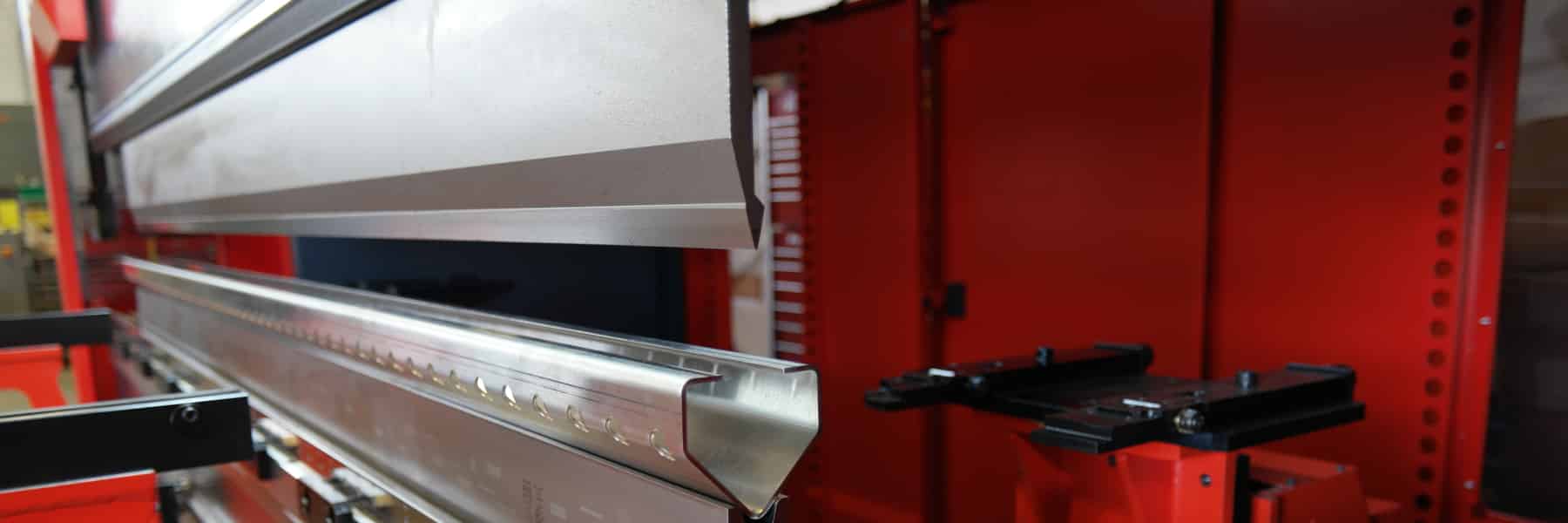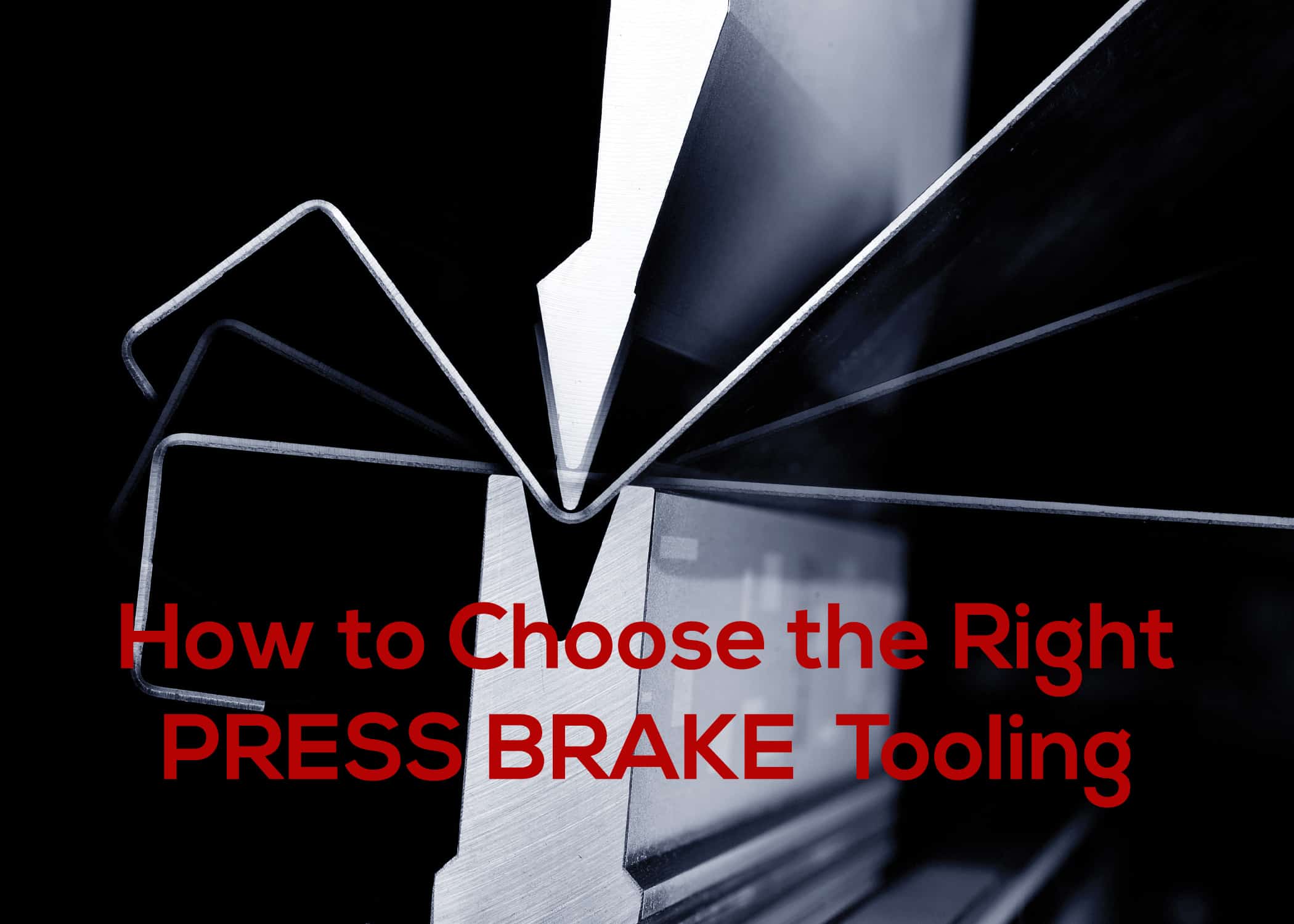The Right Tool for the Job
The time-honored adage that your dad taught you about selecting “the right tool for the job” doesn’t just apply to your toolbox. Any tool that contacts a workpiece—whether it be a hammer, a drill bit, or a shear blade—should be chosen wisely. For all the massive tonnage that a press brake brings to bear in your fabrication projects, your machine is only as good as the press brake tooling you attach to it.
Selection of the wrong punch or die for a press brake doesn’t just run the risk of causing a poor bend, it can lead to the very real danger of cracked—or exploding—tooling. For the sake of the job and the personnel alike, always choose the right press brake tooling for both your shop and the job at hand.
Basic Principles of Tooling Selection
The basic rules of press brake tooling selection are simple:
- Buy a variety of high-quality punches and dies to stock your shop with.
- Use the correct type of punch and die for the bending job you are working on.
- Recognize that the above two principles are just that—principles. Keep them in mind as you now set yourself to the task of really learning about press brake tooling and applying what you learn to doing both properly.
It behooves a press brake owner or operator to take a course and buy a book or two about press brake tooling to really get a grasp on the subject. Buying the first piece of tooling you see, especially if you can get it for a “good price,” may wind up costing you quite a bit in the end. When you buy tires for your vehicle you likely do some research. The same applies to purchasing tooling for your brake (or other metalworking machines). Knowing enough to buy the best tires usually ends there—maybe with buying snow tires you trade out twice a year—but press brake tooling gets changed to different configurations very frequently. It’s like buying a set of tires for each road condition: hot pavement, cold cement, gravel, mud, rain, slush, powder snow, ice, hail, and so on.
The best brand of tooling in the world won’t do you much good if you select the wrong punch or die for a job, so get to know each type and learn what they are used for and when.
Choosing Press Brake Tooling for a Shop
Some guidelines that may help start the process of buying good tooling for a shop:
- Purchase ground and hardened high precision tooling manufactured to tolerances within the 0.0004-inch range. European Style tooling are precision-ground to a tolerance near ±0.0005″ and are extremely hardened. New Standard Style tooling is also precision-ground for accuracy.
- All tooling should be of the same height to eliminate the need for constant adjustments of the machine and its support devices between projects. It will also allow new tooling to match the old pieces.
- Buy tooling in segmented sections of different lengths. Not only are they easy to handle, but like a child’s building blocks they allow you to arrange the pieces in a row to create tooling of whatever length you need for the job.
- Learn about specialized punches and dies and know when it’s best to buy them for use with more complicated jobs.
- Be willing to invest in a new clamping system and matching tooling, if needed. The traditional American Style tooling has a smaller area for clamping. European Style has a larger surface area for clamping, making it more secure and accurate. Wila’s New Standard Style tooling has an auto-clamping system for fast tool changeovers and very accurate tool seating. Front-loading, self-seating punches are ideal for ease, accuracy, and safety.
Selecting Press Brake Tooling for a Specific Job
Some recommended tips for helping pick out the best punch and die for a job:
- Understand the differences between air bending, bottom bending, and coining, and know when to use each. Air bending—which involves leaving an air gap between the material and the bottom of the V die—is the standard process, but there will be cases where the material needs to touch the bottom of the die, either lightly (bottom bending) or heavily (coining).
- Make the air bending tonnage chart your best friend. If your brake doesn’t come with a chart mounted to it, find one on the web to print out and tape on your machine. Knowing just the material thickness and the desired inside bend radius, you will be able to calculate from the chart the necessary V die opening, the minimum bendable flange length, and the tonnage per foot of material to make the bend.
- Apply the Rule of Eight. If you don’t know what the inside bend radius will be, a guideline is to select a V opening that is six to ten times the thickness of the material to be bent, so about eight times on average (which is the formula used on most bending charts). When a match can’t be found, round up to the next closest die and you’ll be close to what you need and can experiment from there.
- Don’t try to pick out a punch until you’ve determined a die that has the proper V opening for the job.
- Pay attention to the maximum tonnage capacity of the die in question. For short flanges, the correct V opening might require more tonnage than a specific die can handle.
- Select a punch with a tip that has a radius that’s about half of the thickness of the material if you are bending mild steel or stainless. For soft aluminum, the radius of the tip may have to be identical to the inside radius of the bend.
- Know how to compensate for spring back in the material being bent. For example, because of the greater tensile strength of stainless steel, overbending by one or two degrees is usually necessary to allow for spring back to return the material to the desired angle. For a 90° bend, using an 88° punch is usually recommended for bending stainless.
- Learn the different styles of punches and what they are used for, such as acute punches, which are used for bending very small angles, and gooseneck punches with their large, concave shape, which are used in making channels and U-profiles where a flange would otherwise impact the side of a standard punch.
Where the Rubber Meets the Road
Remember, the tooling is all that ever actually touches the part during a bending operation. Regardless of the power of the press brake or the quality of the metal in the workpiece, it’s the tooling that performs the work. Equipping your shop with the right tooling, then picking the proper punch and die for each job will keep you productive, safe, and profitable.







